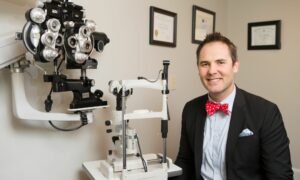
May 6, 2015
Your patients may need to be educated and prescribed new contact lens options, findings from Jobson Optical Research’s 2014 Contact Lens Wearers Insight Survey suggest. Some 45.9 percent say they are wearing “the brand I have always worn regularly.” Some 35.3 percent say they used to wear another brand regularly, but then switched to the brand they are currently wearing. Another 10.5 percent say they have worn three or more brands regularly since they were first prescribed contact lenses, while 3.0 percent say they have never been consistent in the CL brand they have worn.
Click HERE to purchase Jobson Optical Research’s 2014 Contact Lens Wearers Insight Survey.
Are you losing contact lens patients unnecessarily? If there are about 20 percent new fits each year, and about 16 percent of patients who stop wearing contacts each year, contact lens growth is being restricted by dropouts. The new contact lens fits are, in essence, just replacing the contact lens dropouts. That’s a problem we should fix.
To clarify the problem, let’s look at the numbers. If the average practice has about 2,200 patients, and 20 percent of them are contact lens wearers, that means there are 440 contact lens patients in the practice. If 16 percent of those patients drop out of contact lens wear each year, then about 70 patients each year are lost to contact lens wear.Over a 10-year window, that’s 700 patients. That should get our attention.
Let’s drill down a little deeper. Discomfort is the number one reason that patients stop wearing contact lenses. With all of the advances in contact lenses and contact lens care regimens, discomfort is something that can be prevented.
The first thing to do is to become more nuanced in your pre-examination history questioning. Think about adding these questions to your pre-exam history questionnaire: Can you wear your contact lenses all day long without any discomfort? Do you find yourself taking your contact lenses out sooner than you want?Do you ever wake up and your eyes feel really dry? What medications are you taking? Do you have allergies?
The second thing to do is to review the contact lenses and the contact lens modality your patients are utilizing. Is there a better lens? Is there a better wearing schedule? Are there better contact lens solutions they should be using? Is compliance an issue? Handle these issues before they evolve into problems. The problem here to overcome is the reluctance of many doctors to change to newer and better products. This reluctance comes from the “if it isn’t broke, don’t fix it” mentality.
Consider this:A proactive approach by putting patients into newer and better materials may keep a patient from becoming a contact lens dropout. A reactive approach – waiting until there is a problem, then reacting – may be too late to save the patient from becoming a contact lens dropout.
The third thing to do is to open lines of communication with the patient. With Meaningful Use Stage 2, we need to communicate with our patients through the digital portal. What a perfect tool to use to have the patient communicate any contact lens-related issues that occur before their next visit, enabling us to stay on top of potential discomfort problems before they result in discontinuation of contact lens wear! Figure out how to do this using your secure portal in your practice.
Your action plan for this week is to review your contact lens fitting habits, your contact lens protocols and your contact lens communications with the goal of keeping more of your contact lens patients from becoming contact lens dropouts.
References
1. Nichols JJ. 2010 Annual Report on Dry Eye Diseases. CL Spectrum. 2010 Jul;15(8):22.
2. Rumpakis J. New data on contact lens dropouts: an international perspective. Rev Optom. 2010 Jan;147(1):37-42.

























